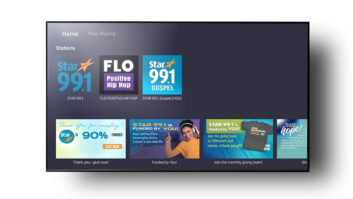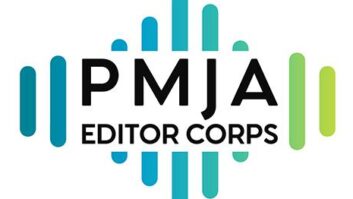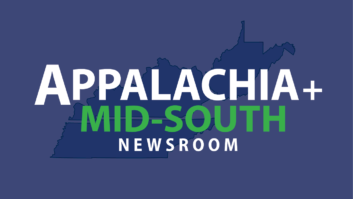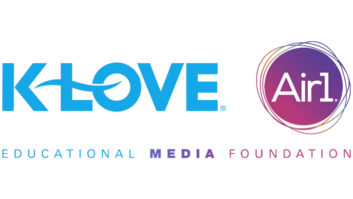
ESPN deployed a drone camera to cover the Winter X-Games in January.
Credit:
Eddie Perlas/ESPN Images The Federal Aviation Administration has proposed rules governing the use of unmanned aerial systems, or UAS, in American airspace. Some of the nation’s largest media groups intend to test drones for newsgathering later this year.
The FAA, which is developing rules for the use of both private and commercial drones, gave clearance to CNN earlier this year to test the devices as part of an existing research partnership with the Georgia Tech Research Institute in Atlanta, which has been testing the unmanned aerial vehicles for a while.
Virginia Tech intends to enter into a partnership with 10 media groups to test drones to gather data for the FAA. Specifically, the project with the Mid-Atlantic Aviation Partnership — one of six test sites established by Congress to collect data on the use of drones — includes the Associated Press, Advance Publications, Belo, Gannett Getty Images, NBCU, The New York Times Co., Scripps, Sinclair and The Washington Post. The test sites have been operational since August, according to the FAA. The trials are designed to conduct controlled safety testing of a series of real-life scenarios where the news media could use small UAV technology to gather the news.
In addition to television use, the drone activity has the potential to affect radio stations; in its proposed rules, the FAA lists several potential business and non-business applications, particularly in areas that are hard to reach and/or dangerous for a manned aircraft. Examples include broadcast or cellular antenna and tower inspections.
“In some cases, unmanned aircraft could conduct inspections more safely than a worker who would need to climb a tower,” FAA Administrator Michael Huerta said in a conference call with reporters.
The FAA’s proposed drone rules stipulate that drones used for commercial operations should weigh less than 55 pounds, fly only during the day in good weather, fly no faster than 100 miles per hour, stay away from airports and remain within visible line-of-sight of the operator (see sidebar below.)
Meanwhile, “Virginia Tech sees [its] collaboration as a key to groundbreaking research to use UAS for the news and broadcasting industry on a routine basis,” said Rose Mooney, executive director of the Virginia Tech Mid Atlantic Aviation Partnership. “UAS can provide this industry a safe, efficient, timely and affordable way to gather and disseminate information and keep journalists out of harm’s way. We are excited to be partnered with the consortium and the FAA to further UAS integration into the National Airspace System.”

A drone is tested at a Virginia Tech evaluation site, one of six sites established by Congress to collect data on drone use.BABY STEPS
When it comes to the current market for drones, there is no shortage of manufacturers, with models ranging from the simplest hobbyist plaything to sophisticated flying machines featuring state-of-the-art performance, stabilization and telemetry. There are also many potential customers ready to buy and fly the drones, some looking for fun and others looking to put the drones to work.
But standing in the way of the second group is the FAA’s ban on commercial flight of small unmanned aerial systems. Among those who are lobbying to have the ban lifted are newsgatherers, who should be allowed to use drones to cover news stories, according to Mike Cavender, executive director for the Radio Television Digital News Association. “That’s the goal that we have been working toward for many months,” he said.
There has been some movement on the FAA’s part recently on using drones commercially for aerial photography, though none of it has permitted reporter/photographer teams to go out and shoot news with drones.
Last September, the FAA granted exemptions to a half-dozen aerial photography companies, allowing them to operate camera-toting drones under controlled circumstances, operated within line of sight by an FAA licensed pilot and with the assistance of a trained spotter. The companies needed to provide the FAA with a week’s advance notice and file a flight plan with a local FAA office.
The airspace in which the drones are operated must be under control, and the general public cannot be on the ground below the operating drone.
ESPN announced in January that the FAA had granted permission to Vortex Aerial, one of the aerial photography companies with an exemption, to conduct drone photography flights for use in covering the Winter X-Games.
FAA exemptions have also been granted to a small number of firms for uses in industries such as real estate, agriculture and pipeline and power line inspections.
The very nature of a breaking news story is that much of it is unpredictable, so the one-week notice requirement and control of the situation on the ground are non-starters for news use, according to the RTDNA. “What we are working toward in working with the FAA and other organizations in Washington, is a broader exemption which would allow newsgathering organizations to have some type of limited, line-of-sight opportunity to use unmanned vehicles over breaking news events and spot news,” said Cavender.

Pictorvision has received FAA approval to fly two new heavy lift drones for aerial cinematography. Pictorvision was one of the first companies to receive the FAA exemption to commercially fly drones for aerial cinematography and also has FAA licensed and approved personnel.HARD TO MANAGE
Indeed, the FAA doesn’t disagree with an estimate by the General Accounting Office that final drone rules are probably two to three years away. Until that time, the current rules remain in effect.
Huerta told reporters the FAA is tackling integration of new rules — which he called a “flexible, regulatory framework” — in phases to keep the nation’s airspace safe because that’s what the public expects.
Pictorvision in Van Nuys, Calif., is another of the six aerial photography companies granted an exemption from the FAA last fall. Pictorvision President Tom Hallman contrasted the use of drones in “controlled circumstances” with the uncontrolled environment of ENG.
Using drones for newsgathering “is just the opposite of our situation,” Hallman said. “Newsgatherers don’t have total control, and it wouldn’t be newsworthy if it was. That’s why they’re the hardest of all users for the FAA to know how to manage.”
McKenna Long & Aldridge LLP attorney Lisa Ellman has worked both sides of the drone fence, first with the Department of Justice working to craft rules that would guide the domestic use of drones in the U.S., and now as co-chair of her law firm’s unmanned aircraft practice.
Currently, the FAA requires someone to have a pilot license to fly a commercial drone for safety reasons.
Significantly, it has proposed that those flying drones will not need the same training as pilots who fly manned aircraft. Rather, the FAA proposes to create a separate certification-based process for drone operators; such operators would need to be recertified regularly.
Ellman characterized the proposed UAS operator’s certificate as a “huge, wonderful thing” in comments to Fortune Magazine. “It will be relatively easy to get and will make drones broadly accessible.”
She applauds the FAA’s recent moves on authorizing media-government partnerships on drone testing. Such tests, she told TV Technology, could answer questions such as “if you’re using them at a crime scene investigation, is it going to be safe and not going to interfere with the investigation.” The tests would allow broadcasters “to think in advance of all these issues that policymakers could be thinking about, and then present those to the FAA.”
NON-PILOTS CAN FLY DRONES UNDER PROPOSED RULES
Non-Pilots Can Fly Drones Under Proposed Rules
Drones would not have to be flown by licensed pilots under rules proposed in February by the Federal Aviation Administration.
The proposal is counter to exemptions granted last year to several TV and movie production companies requiring unmanned aerial systems to be operated by a licensed pilot. The FAA said the requirement would pose an “unnecessary burden for many small UAS operations.”
“A person typically obtains a private or commercial pilot certificate by learning how to operate a manned aircraft,” the FAA said in its 195-page Notice of Proposed Rulemaking. “Much of that knowledge would not be applicable to small UAS operations because a small UAS is operated differently than a manned aircraft.”
A commercial drone operator would be required to pass an FAA-approved aeronautics test, obtain approval from the Transportation and Security Administration, get FAA-drone certified and be at least 17 years old. She or he would have to be recertified every two years.
“This is the most hopeful I’ve been about the prospects for drone journalism in quite some time,” said Matt Waite of the University of Nebraska’s Drone Journalism Lab. “There’s very little you couldn’t do journalism-wise within these rules.”
Waite continued: “Under this regulatory framework, every newsroom will have drones and people certified to fly them. I had, before today, been despairing that people were going to have to get a pilot’s license and there was going to be scads of additional gear you were going to have to own.”
Under the proposal, the following rules would apply to small unmanned aircraft for commercial use:
• Weigh no more than 55 pounds
• Maximum altitude of 500 feet above ground
• Maximum airspeed of 100 mph (87 knots)
• Unaided (except for glasses or contacts) visual line-of-sight by the operator
• Flight during daylight only
• No flight over people not involved in the operation
• Minimum weather visibility of three miles from control station
• Preflight inspection
• Limited to no flight in restricted airspace
• No airworthiness certificate is required
• Operators must avoid all other aircraft, manned or otherwise
• Accidents resulting in property damage or injury must be reported
The FAA will accept public comments on the NPRM until April 24 to Docket FAA-2015-0150. Attorneys with Thompson Coburn LLP in Washington expect “a high volume of comments given the wide-reaching impact of these regulations on commercial UAS activity in the United States.”
The FAA issued a status report indicating it received 33,000 comments on its June 2014 “Interpretation of the Special Rule for Model Aircraft.” The status report “provides us with just a hint of what could be a massive undertaking that is ahead of the FAA when comments to the NPRM start rolling in,” the attorneys said in a letter to clients.
‘COMMONSENSE RULES’
Mickey Osterreicher, general counsel for the National Press Photographer’s Association, suggested that the FAA should develop “commonsense rules” regarding drone flight pilot’s licensing, “…something similar to what people have for driver’s licenses, which are, that you have to take a written test; you have to take a road test. In other words, you have to show you can fly one of these devices; you have to have it registered. You can’t just fly any platform, just like in a similar way the Department of Transportation limits what can be on the road, and then you have to meet certain minimal insurance requirements, meaning you have to have some insurance.”
As to what will be the minimum requirements for a drone to be deemed airworthy for news coverage use, Michael Perry, spokesman for drone-maker DJI in Hong Kong, noted some features on the company’s top-of-the-line unmanned aircraft.
“We’ve just created a pretty remarkable app for our Phantom Vision series that gives you all of the telemetry onboard in real time to your smartphone,” he said. “So while you’re looking at the image of what the camera’s seeing, you’re also getting everything from altitude, speed.”
Though the FAA requires the previously noted operation of a done within line of sight of the pilot, Perry said it might be difficult to tell at a distance whether the drone was coming or going. “The app also gives you the orientation of the aircraft. It will tell you where the platform is on the map, and you can set waypoints on it: ‘I want the platform to fly here, here and here, this is the altitude, this is the speed, go.’ And it will automatically fly out, and it will automatically come back to you.”
Though there are stories making the rounds about stations that have “jumped the gun” on using drones for news photography, attorney Ellman said, “It’s illegal, and on Oct. 10 the FAA released new guidance talking about the ability to bring enforcement actions against those who operate a UAS illegally.”
In January, the FAA “issued guidance to law enforcement about what the rules are and what they should be looking for, how to go about bringing enforcement action. So they’re taking a big risk, liability concerns if something goes wrong, and the fact that it’s just illegal,” according to Ellman.
RTDNA’s Cavender suggested there is something newspeople can do to assist in the industry’s lobbying effort to the FAA: document for him “specific in-market examples of breaking news events and other news stories where the use of drones would have allowed for more access as well as better, safer video coverage than provided by equipment currently in use.”
NAB also has the use of drones on its radar. The 2015 NAB Show in April will feature a new Aerial Robotics and Drone Pavilion and a session on drone use for newsgathering.
A version of this story appeared in our sister publication TV Technology. Radio World News Editor/Washington Bureau Chief Leslie Stimson contributed to the above report.







